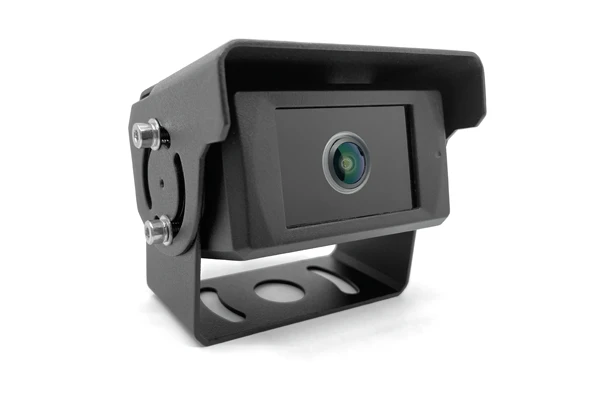General Safety Regulation (GSR)
What is the General Safety Regulation (GSR)?
The General Safety Regulation (GSR) for trucks is a set of safety standards that applies to heavy-duty trucks in the European Union (EU). The regulation sets out a range of requirements that aim to improve the safety of all vehicles on the road by mandating the use of advanced safety technologies and improving the design of the truck cab.
The EU estimates its new vehicle regulations will save more than 25,000 lives and avoid at least 140,000 serious injuries by 2038.

Vehicles Effected by GSR
The General Safety Regulation (GSR) also applies to trucks applies to heavy-duty trucks in the European Union (EU) that have a gross vehicle weight exceeding 3.5 tonnes. This includes a wide range of commercial vehicles such as freight trucks, delivery vans, buses, and coaches.
M2 - Passenger Transport
- With more than 8 seats in addition to the driver’s seat
- Vehicle of less than 5 tonnes
M3 - Passenger Transport
- With more than 8 seats in addition to the driver’s seat
- Vehicle of more than 5 tonnes
N2 - Goods Transport
- Weight between 3.5 t and 12 t
N3 - Goods Transport
- Weight superior at 12 t
Key Notes
- GSR covers all new heavy-duty trucks sold in the EU, regardless of where they were manufactured.
- It also applies to trucks that are imported into the EU from other countries

R151 Blind Spot Information System (BSIS)
Blind Spot Information System (BSIS) is an advanced automotive safety feature that utilizes sensors, cameras, and intelligent algorithms to detect and monitor the blind spots on the passenger side of the vehicle . The primary purpose of a BSIS is to assist drivers in identifying and avoiding potential collisions with cyclists that may be hidden from their direct line of sight.
The regulation imposes the following requirements:
- System monitors the blind spot on the passenger side of the vehicle to prevent collisions with cyclists
- For vehicles in all N and M classes
- When operating the vehicle between 0 and 30 km/h
- BSIS informs the driver of a cyclist in the blind spot via an optical, acoustic, haptic or combined signal.

Brigade’s Solution to R151

Radar Predict AI Sensor System
Right Side: for left-hand drive vehicles
Model |
Part Number |
| RP-010: 77GHz Radar Predict sensor system with AI | 7625 |
Left Side: for right-hand drive vehicles
Model |
Part Number |
| RP-001: 77GHz Radar Predict sensor system with AI | 7500 |

R158 Rear Visibility and Detection
Reversing devices are primarily designed to assist drivers during reversing or parking situations where limited visibility can increase the risk of accidents or collisions. It enhances the driver’s awareness of their surroundings, especially in blind spots, and helps them manoeuvre the vehicle with greater precision and confidence. By providing visual and audible feedback about nearby objects or obstacles, Reversing devices contributes to improved safety and reduces the likelihood of accidents during these manoeuvres.
The regulation imposes the following requirements:
- The system monitors the rear of the vehicle to prevent collisions while reversing.
- For vehicles of classes M2, M3, N2 and N3
- Activated when selecting reverse gear
- The range is from 0.2m to 3.5m behind the vehicle, dependent on rear visibility or detection
- Detection of the same width as the vehicle
- Informs the driver of an object when reversing via an acoustic, optical or haptic signal.

Brigade’s Solution to R158

Camera Monitor Systems
VBV-7100C AHD Camera

- High definition (1080p)
- Viewing angle (HxVxD): 110° x 60° x 127°
- IP69K
- Size (WxHxD): 81 x 77 x 70mm
- 3 year warranty
BE-810C Shutter Camera with WDR

- Viewing angle (HxVxD): 103 x 71 x 134°
- IP68 / IP69K
- Size (WxHxD): 123 x 86 x 80mm
- 5 year warranty
VBV-2230C AHD AI Camera

- High definition
- 12-24Vdc
- Camera Viewing angles:
Horizontal 52°
Vertical: 30° - AI Detection range:
Rear: Up to 11m (dependent on camera mounting height) - IP69K
- Camera Size (WxHxD): 97.5×75.3×72
- 2 years warranty

R159 Moving Off Information System (MOIS)
MOIS is a system to detect and inform the driver of the presence of pedestrians and cyclists in close-proximity to the front of the vehicle and, if necessary, warn the driver of a potential collision. The information system should minimise false alarms.
The regulation imposes the following requirements:
- The system monitors the blind spot in front and prevents collisions with pedestrians or cyclists
- For vehicles of classes M2, M3, N2 and N3
- When operating the vehicle between 0 and 10 km/h
- MOIS informs the driver of a cyclist or pedestrian in the blind spot via an optical, acoustic, haptic or combined signal.
- Detection from 80 cm to 3.7 m in front of the vehicle (4.5 m in total)
- Minimum detection width should be 4.3 m

Brigade’s Solution to R159

Front Radar Sensor System
- 9-32Vdc
- Detection length: 2.5m
- Detection width: 3.6m
- Sensor size (WxHxD) 115 x 95 x 41mm
- Sensor size with bracket (WxHxD) 200 x 110 x 43.5mm
- Display size (WxHxD) 80 x 40 x 20mm
- IP69K sensor
- 3 year warranty
When do GSR requirements come into force?
Type Approvals
- Intelligent speed assist
- Alcolock interlock
- Driver drowsiness & attention warning
- Emergency stop signal
- Reversing detection
- Pedestrian & Cyclist warning
- Blind spot information (active)
- Indirect vision (passive)
- Front nearside proximity sensors
- Audible warning
New Registrations
- Intelligent speed assist
- Alcolock interlock
- Driver drowsiness & attention warning
- Advanced driver distraction warning
- Emergency stop signal
- Reversing detection
- Pedestrian & Cyclist warning
- Blind spot information (active)
- Indirect vision (passive)
- Front nearside proximity sensors
New registrations
- Advanced driver distraction warning
Type approvals
- Event data recorder
New registrations
- Event data recorder
How Brigade can help
Brigade representatives sit on the UNECE IWG working group to advise and support policy development. We are experts in a wide range of vehicle safety devices, particularly vulnerable road user detection for the; nearside, rear and front of the vehicle. We have a large engineering department that design award winning safety solutions to meet both aftermarket and OEM standards. Our expertise covers ultrasonic, radar, camera, digital recording and RFID object detection technologies.
